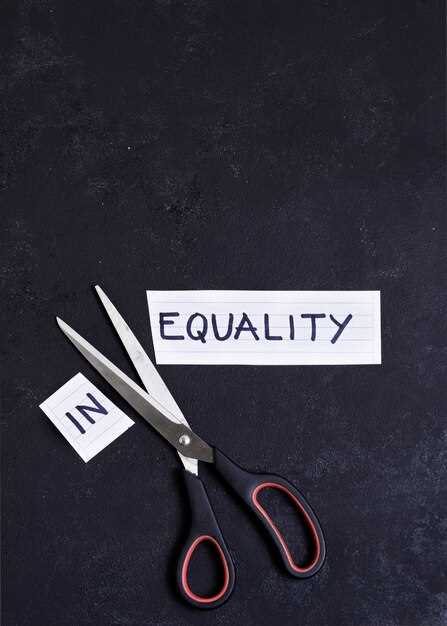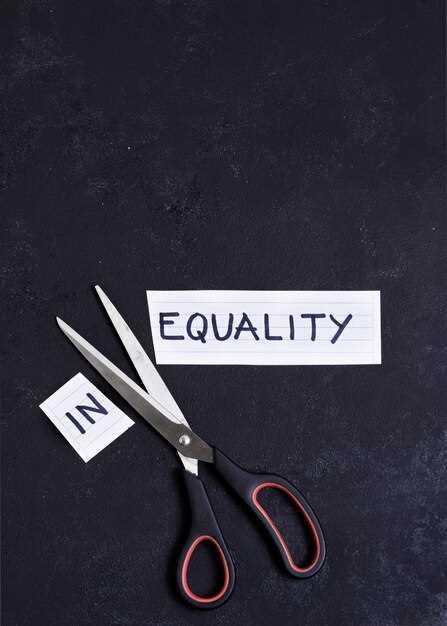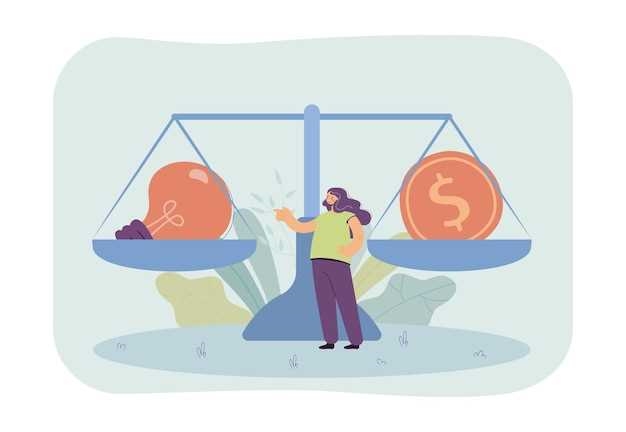
In today’s society, there exists a pressing need to address the disparities that persist in our communities. We are confronted with the challenge of achieving racial equality and economic justice, two intertwined concepts that shape the fabric of our society. This article delves into the complexities of this issue, exploring the obstacles that hinder progress and the opportunities that lie ahead.
At its core, the pursuit of racial equality and economic justice is about creating a society where every individual has an equal opportunity to thrive, regardless of their background or circumstances. It is a call for fairness, inclusivity, and the dismantling of systemic barriers that perpetuate inequality. This journey requires us to confront the deep-rooted biases and prejudices that have shaped our institutions and policies, and to challenge the status quo.
Overcoming the challenges that impede progress towards racial equality and economic justice demands a multifaceted approach. It necessitates a collective effort to address the structural and systemic issues that perpetuate inequality. We must recognize that achieving true equality requires more than just superficial changes; it requires a fundamental shift in our mindset and a commitment to dismantling the systems of oppression that have been ingrained in our society for far too long.
While the road ahead may be daunting, it is crucial to recognize the immense opportunities that lie within our grasp. By embracing diversity and inclusivity, we can tap into the wealth of knowledge, skills, and perspectives that individuals from different backgrounds bring to the table. This not only fosters innovation and creativity but also creates a more just and equitable society for all. By investing in education, job training, and entrepreneurship opportunities, we can empower marginalized communities and provide them with the tools they need to succeed.
Understanding the Intersectionality of Race and Economic Inequality
In this section, we will explore the complex relationship between race and economic inequality, delving into the ways in which these two factors intersect and influence each other. By examining the interconnectedness of race and economic disparities, we can gain a deeper understanding of the challenges faced by marginalized communities and the opportunities for creating a more equitable society.
At the core of this discussion is the recognition that race and economic inequality are not isolated issues but are deeply intertwined. The experiences of individuals from different racial backgrounds are shaped by their socioeconomic status, access to resources, and opportunities. This intersectionality highlights the need to address both racial and economic disparities simultaneously, as they perpetuate and reinforce each other.
- Examining the historical context: Understanding the historical roots of racial and economic inequality is crucial in comprehending their intersectionality. By exploring the legacy of systemic racism, discriminatory policies, and economic exploitation, we can gain insights into the present-day disparities that persist.
- Impact on education and employment: The intersectionality of race and economic inequality significantly affects access to quality education and employment opportunities. We will explore how racial disparities in educational attainment and discriminatory hiring practices contribute to economic disparities.
- Wealth and asset accumulation: The intersectionality of race and economic inequality is evident in the disparities in wealth and asset accumulation. We will examine the factors that contribute to the racial wealth gap, such as homeownership rates, access to financial resources, and generational wealth transfer.
- Healthcare and racial disparities: The intersectionality of race and economic inequality also manifests in healthcare disparities. We will discuss how limited access to healthcare services, higher rates of chronic illnesses, and inadequate healthcare coverage disproportionately affect marginalized communities.
- Policy implications and solutions: Finally, we will explore potential policy interventions and solutions that can address the intersectionality of race and economic inequality. By implementing policies that promote equal access to education, employment, healthcare, and wealth-building opportunities, we can work towards dismantling systemic barriers and fostering a more just society.
By understanding the intersectionality of race and economic inequality, we can challenge the status quo and advocate for policies and initiatives that promote racial and economic justice. Recognizing the interconnected nature of these issues is crucial in creating a more equitable and inclusive society for all.
Historical Context: Examining the Roots of Racial Disparities in Economic Opportunities
In this section, we will delve into the historical factors that have contributed to the unequal distribution of economic opportunities among different racial groups. By exploring the past, we can gain a deeper understanding of the root causes behind the existing disparities.
Throughout history, various social, political, and economic factors have shaped the opportunities available to different racial communities. These factors have influenced access to education, employment, housing, and wealth accumulation, leading to significant disparities in economic outcomes.
- Colonialism and Slavery: The legacy of colonialism and slavery has had a profound impact on the economic opportunities available to marginalized racial groups. The exploitation of enslaved Africans and the dispossession of indigenous peoples laid the foundation for long-lasting economic inequalities.
- Segregation and Jim Crow Laws: The era of segregation and Jim Crow laws further entrenched racial disparities by enforcing racial segregation in schools, housing, and public facilities. This limited the economic opportunities available to Black communities and perpetuated systemic discrimination.
- Discriminatory Policies and Practices: Discriminatory policies and practices, such as redlining, discriminatory lending practices, and unequal access to government programs, have systematically disadvantaged racial minorities. These practices have hindered wealth accumulation and limited economic mobility.
- Education Disparities: Unequal access to quality education has perpetuated economic disparities. Historically, marginalized racial groups have faced limited educational opportunities, resulting in lower levels of educational attainment and reduced access to higher-paying jobs.
- Systemic Racism: Systemic racism, embedded within institutions and societal structures, has played a significant role in perpetuating racial disparities in economic opportunities. This includes biases in hiring practices, wage gaps, and unequal access to resources and opportunities.
By examining the historical context and understanding the root causes of racial disparities in economic opportunities, we can begin to address these issues and work towards a more equitable and just society.
Systemic Barriers: Identifying the Obstacles to Achieving Racial Equality in Economic Fairness
In this section, we will explore the underlying challenges that hinder the attainment of racial equality in the realm of economic fairness. By delving into the systemic barriers that exist, we can gain a deeper understanding of the obstacles that need to be addressed in order to create a more just and equitable society.
The Role of Structural Discrimination
One significant obstacle to achieving racial equality in economic fairness is the presence of structural discrimination. This form of discrimination operates within various systems and institutions, perpetuating unequal opportunities and outcomes for marginalized communities. It manifests in policies, practices, and norms that disproportionately disadvantage certain racial groups, hindering their ability to access and thrive in economic opportunities.
Structural discrimination can be observed in areas such as employment, housing, education, and access to financial resources. For instance, discriminatory hiring practices, biased lending policies, and segregated neighborhoods all contribute to the perpetuation of economic disparities among different racial groups. These systemic barriers create a cycle of disadvantage that is difficult to break without targeted interventions.
Implicit Bias and its Impact
Another significant obstacle to achieving racial equality in economic fairness is the presence of implicit bias. Implicit biases are unconscious attitudes and stereotypes that individuals hold towards certain racial groups, influencing their decision-making processes and behaviors. These biases can lead to discriminatory practices in hiring, promotions, and access to resources, further exacerbating economic disparities.
Implicit bias can also affect the provision of services and opportunities, leading to unequal treatment and limited access to economic resources for marginalized communities. It is crucial to recognize and address these biases in order to create a more equitable economic system that provides equal opportunities for all individuals, regardless of their race or ethnicity.
In conclusion, understanding and identifying the systemic barriers that hinder racial equality in economic fairness is essential for creating meaningful change. By addressing structural discrimination and implicit bias, we can work towards dismantling these obstacles and fostering a more just and equitable society for all.
Promoting Inclusive Policies: Strategies for Overcoming Racial Inequities in Economic Systems
In this section, we will explore effective approaches to address disparities within economic systems, focusing on the importance of inclusive policies. By implementing strategies that foster equal opportunities and fair treatment for all individuals, regardless of their racial background, we can work towards dismantling racial inequities and creating a more just and inclusive society.
One key strategy is to prioritize diversity and representation in decision-making processes. By ensuring that individuals from diverse racial backgrounds have a seat at the table, we can incorporate a range of perspectives and experiences into policy development. This approach helps to challenge existing biases and promote more inclusive economic systems that benefit everyone.
Another crucial aspect is the need to address systemic barriers that disproportionately affect marginalized communities. This involves identifying and dismantling discriminatory practices and policies that hinder equal access to education, employment, and financial resources. By removing these barriers, we can create a level playing field and empower individuals from all racial backgrounds to thrive economically.
Furthermore, it is essential to invest in targeted initiatives that specifically address the unique challenges faced by racial minority groups. This includes providing access to affordable housing, affordable healthcare, and financial support for entrepreneurship and small business development. By tailoring resources and support to the needs of marginalized communities, we can help bridge the economic gap and promote greater racial equity.
Lastly, fostering collaboration and partnerships between government, businesses, and community organizations is vital for promoting inclusive policies. By working together, these stakeholders can leverage their collective resources and expertise to develop and implement initiatives that address racial inequities in economic systems. This collaborative approach ensures a more comprehensive and sustainable solution to the challenges at hand.
In conclusion, promoting inclusive policies is crucial for overcoming racial inequities in economic systems. By prioritizing diversity, addressing systemic barriers, investing in targeted initiatives, and fostering collaboration, we can create a more equitable and just society where everyone has an equal opportunity to thrive economically, regardless of their racial background.
Empowering Communities: Building Capacity and Resilience for Economic Justice

In this section, we will explore the ways in which communities can be empowered to enhance their capacity and resilience in pursuit of economic justice. By fostering self-reliance, promoting inclusivity, and nurturing collective strength, communities can overcome barriers and create sustainable pathways towards economic empowerment.
1. Cultivating Self-Reliance:
Empowering communities begins with cultivating a sense of self-reliance, where individuals and groups are equipped with the knowledge, skills, and resources necessary to navigate economic challenges. By providing access to education, vocational training, and entrepreneurship opportunities, communities can develop their own economic potential and reduce dependency on external support.
2. Promoting Inclusivity:
Building capacity and resilience for economic justice requires a commitment to inclusivity, ensuring that all members of the community have equal access to opportunities and resources. By actively addressing systemic barriers and discrimination, communities can create an environment where everyone can participate and contribute to economic growth and prosperity.
3. Nurturing Collective Strength:
Empowering communities also involves nurturing collective strength, where individuals come together to address common challenges and work towards shared goals. By fostering collaboration, community organizations and networks can amplify their impact, advocate for policy changes, and create a supportive ecosystem that promotes economic justice for all.
In conclusion, empowering communities to build capacity and resilience for economic justice is a multifaceted endeavor that requires cultivating self-reliance, promoting inclusivity, and nurturing collective strength. By embracing these principles, communities can overcome barriers and create a more equitable and just economic landscape.
Collaboration and Allyship: Working Together to Achieve Racial Equity and Economic Justice

In the pursuit of a fair and just society, it is crucial for individuals and communities to come together and support one another. Collaboration and allyship play a vital role in achieving racial equity and economic justice. By working together, we can overcome the challenges and seize the opportunities that lie ahead.
Collaboration involves the collective effort of individuals, organizations, and institutions to address systemic issues and create lasting change. It requires active participation, open communication, and a shared vision for a more equitable society. Through collaboration, we can pool our resources, knowledge, and expertise to develop innovative solutions and strategies that promote racial equity and economic justice.
Allyship, on the other hand, is about using one’s privilege and influence to support marginalized communities and amplify their voices. It requires recognizing and challenging one’s own biases, actively listening to the experiences and perspectives of others, and taking action to dismantle oppressive systems. Allyship is not a one-time act, but an ongoing commitment to learning, unlearning, and advocating for change.
- Collaboration and allyship foster a sense of community and solidarity, creating a supportive environment for marginalized individuals and communities.
- Through collaboration, diverse perspectives and ideas can be brought to the table, leading to more comprehensive and effective solutions.
- Allies can leverage their privilege to advocate for policies and practices that promote racial equity and economic justice.
- Collaboration and allyship help to dismantle the barriers and systemic inequalities that perpetuate racial and economic disparities.
- By working together, we can create opportunities for marginalized individuals to thrive and contribute to society.
In conclusion, collaboration and allyship are essential in the journey towards achieving racial equity and economic justice. By coming together, supporting one another, and actively challenging oppressive systems, we can create a more inclusive and equitable society for all.



